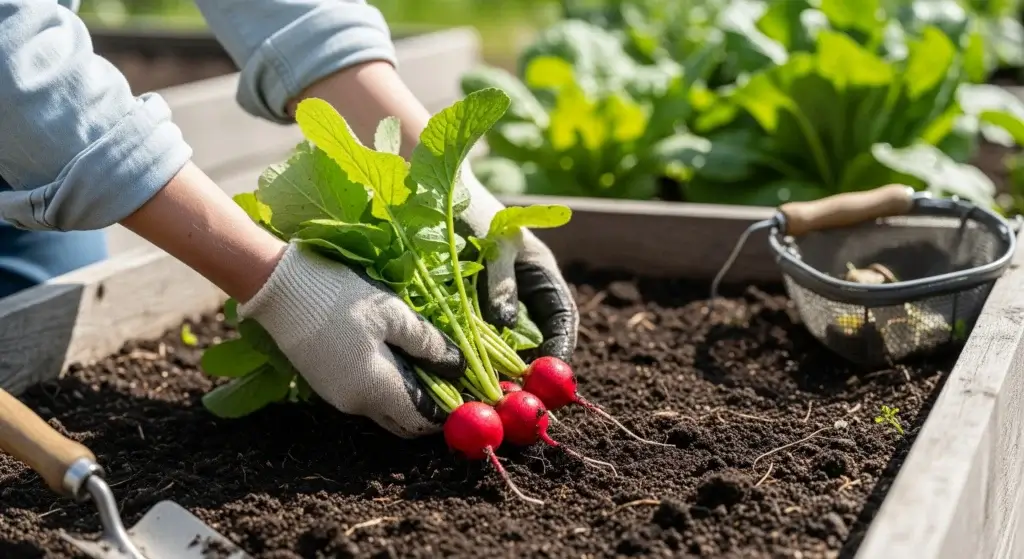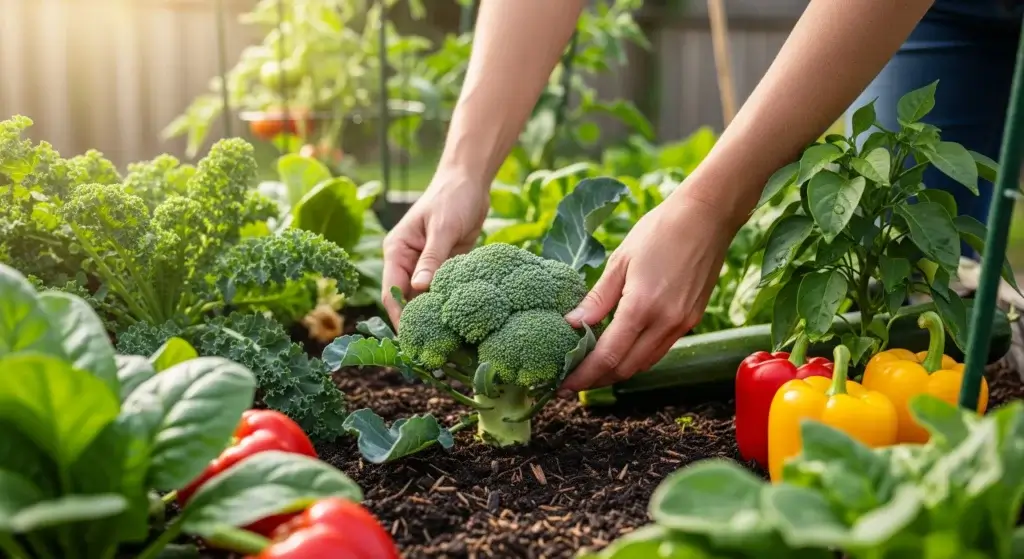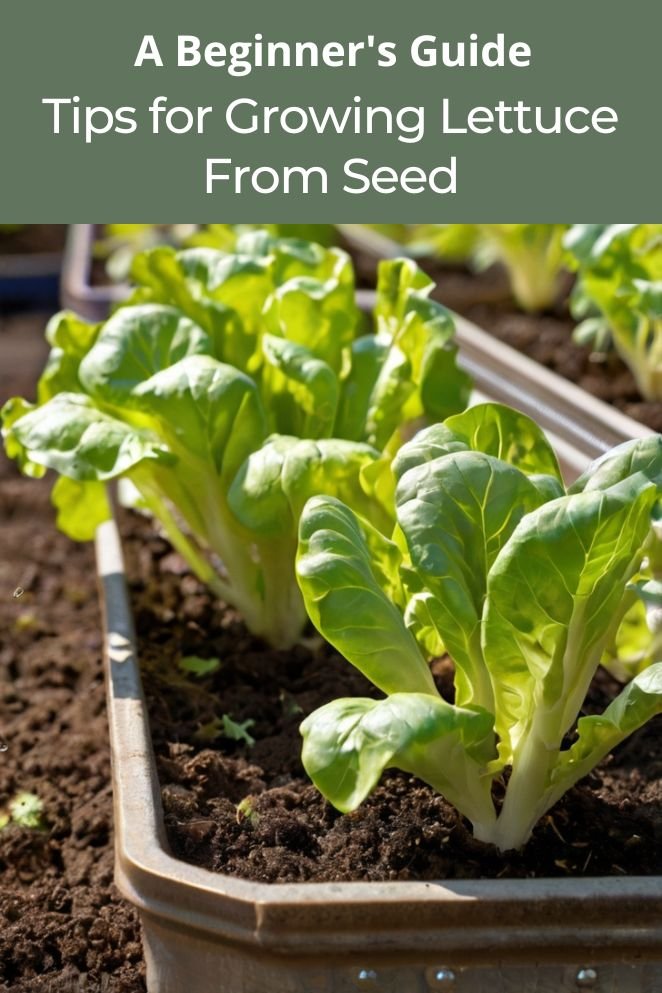
Hello, fellow gardeners!
Want to grow your own fresh, crisp lettuce?
Starting from seed is a great way to save money and explore different lettuce varieties that might not be available at your local store.
In this guide, we’ll cover all the basics of growing lettuce from seed, so you can enjoy a plentiful harvest right from your own backyard.
Selecting Seeds
First things first: selecting the right lettuce seeds.
Selecting seeds for planting involves considering a few factors to ensure a successful and enjoyable gardening experience.
Here’s a breakdown of what to keep in mind:
- Read also: Caring Your Lettuce: How to Prevent Bolting in Lettuce Plants
- Read also: Growing Green: A Guide to Natural Pesticides for Lettuce
Choosing the right variety
- Plant types: Decide what kind of lettuce you want to grow (head, romaine, leaf, etc.). Each has unique characteristics like taste, texture, and maturity time.
- Consider your climate: Some lettuce varieties thrive in cooler weather, while others prefer warmer temperatures. Choose varieties suited to your growing season.
- Disease resistance: If you’ve struggled with specific diseases in the past, look for varieties resistant to those problems. Seed packets will often mention this.
- Days to maturity: This is crucial, especially for short growing seasons. Pay attention to the “days to harvest” information on the seed packet.
- Open-pollinated vs. hybrids: Open-pollinated varieties allow you to save seeds from your harvest for next year. Hybrids typically won’t produce true-to-type seeds.
Seed quality and source
- Purchase from reputable sources: Look for seeds from well-known seed companies or local nurseries that prioritize quality control.
- Check the “Packed For” date: Seeds have a shelf life, and older seeds may have lower germination rates. Aim for seeds packaged within the last year.
- Organic seeds: Choose organic seeds if you prioritize growing without synthetic chemicals.
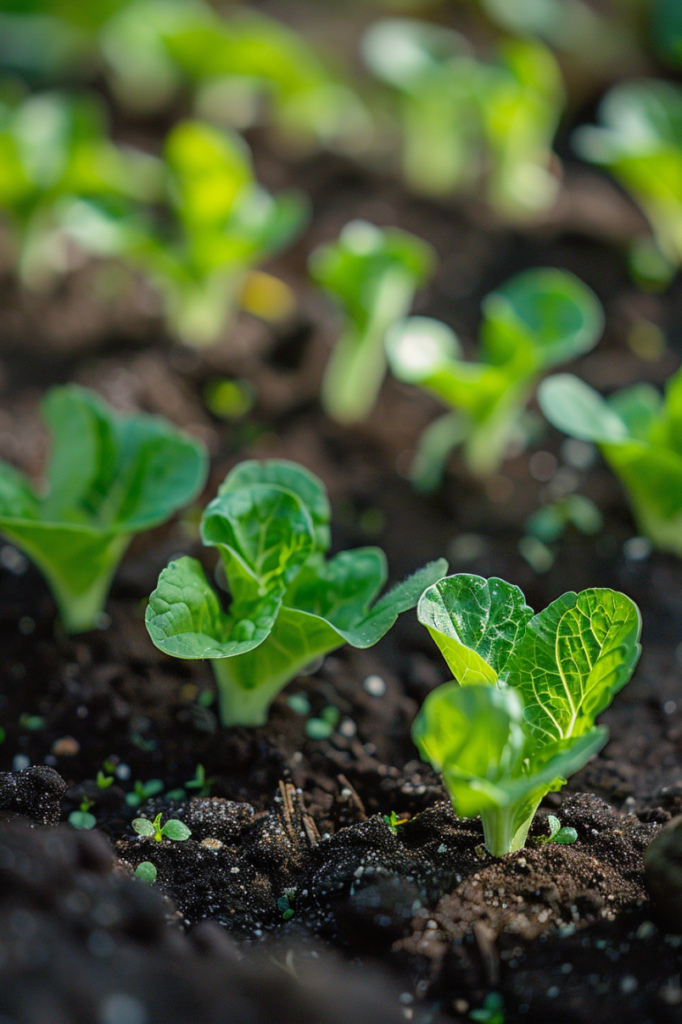
When to Start Seeds (Indoors vs. Direct Sowing)
Lettuce is a cool-season crop that thrives in moderate temperatures, so the best time to plant lettuce seeds depends on whether you’re starting them indoors or outdoors:
Indoors
Aim for 4-6 weeks before your last spring frost date: This gives seedlings enough time to mature before transplanting them outdoors.
Use a seed starting mix and proper lighting. This ensures optimal germination and growth for your young lettuce plants.
Outdoors (Direct sowing)
Direct sow lettuce seeds in the garden when the soil temperature is at least 40°F or plant seeds 2-4 weeks before your last spring frost date.
This allows lettuce to establish itself before hot summer weather arrives.
Alternatively, plant again in late summer for a fall harvest.
Aim for planting towards the end of summer when temperatures cool down a bit.
Preparing the Soil for Planting
Whether you’re planting indoors or directly in the garden, proper soil preparation is key.
Lettuce prefers well-drained soil rich in organic matter.
Here’s how to get your soil ready:
- Test your soil: Check the pH level of your soil. Lettuce grows best in soil with a pH between 6.0 and 6.8.
- Amend the soil: Add compost or well-rotted manure to enrich the soil with nutrients.
- Ensure good drainage: If your soil is heavy and clay-like, consider adding sand or perlite to improve drainage.
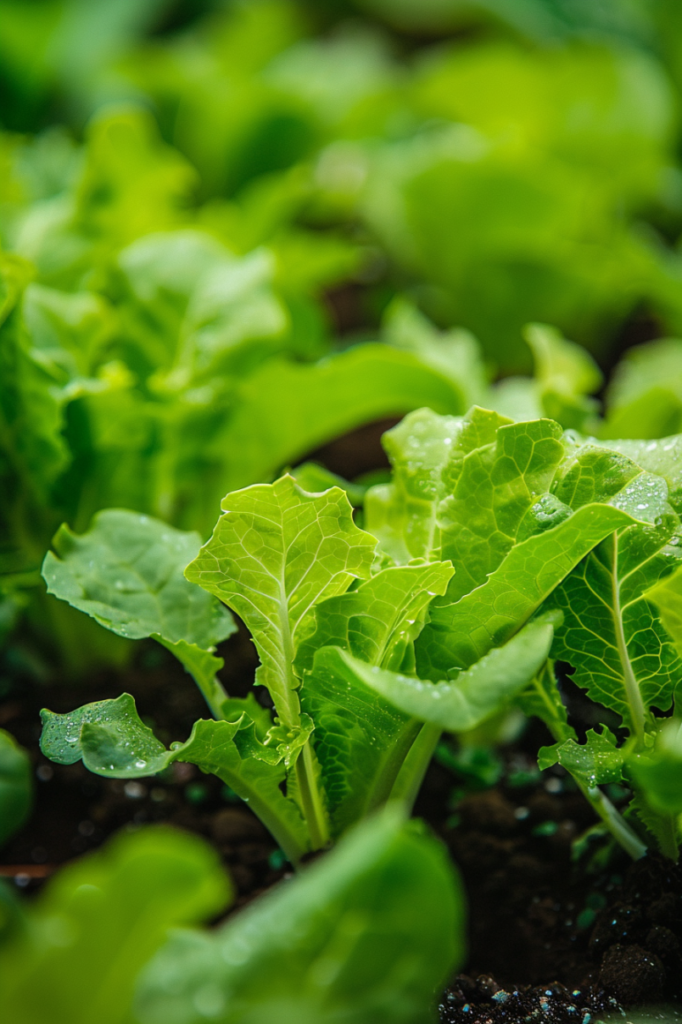
Growing Lettuce from Seed
Indoors
Starting seeds indoors is a great way to get a jump start on the growing season.
Here’s a step-by-step guide:
Step 1: Choose containers
Use seed trays, pots, or biodegradable pots. Make sure they have drainage holes.
Step 2: Fill with seed starting mix
Use a sterile, lightweight seed starting mix.
Step 3: Sow the seeds
Sow the seeds about 1/4 inch deep. Space them about 1 inch apart.
Step 4: Water gently
Keep the soil moist but not waterlogged.
Step 5: Provide light
Place the containers in a sunny window or under grow lights for 12-16 hours a day.
Maintain Temperature: Keep the temperature between 60-70°F (15-21°C) for optimal germination.
Outdoors
If you prefer to plant your seeds directly in the garden, follow these steps:
Step 1: Prepare the soil
As mentioned earlier, ensure your soil is well-prepared.
Step 2: Sow the seeds
Scatter the seeds over the soil or plant them in rows. Cover lightly with soil.
Step 3: Watering
Keep the soil consistently moist.

Seedling Care
Here’s what you need to know about caring for your lettuce seedlings for healthy, thriving plants:
Light
For the best growth, lettuce needs a lot of light—ideally, 14 to 16 hours a day.
If you’re growing it indoors, place it near a south-facing window to maximize natural light.
During the shorter winter days, you might need to use grow lights to supplement the natural light.
Watering
Make sure the soil stays moist without becoming waterlogged, as too much water can cause fungal diseases.
Water deeply but not too often, allowing the top inch of soil to dry out a bit before the next watering.
A watering can with a gentle spray nozzle is ideal to avoid disturbing young seedlings.
Temperature
Lettuce grows best in cool temperatures, ideally between 60-70°F (15-21°C).
It’s important to keep an eye on the temperature and avoid extremes.
To protect seedlings from intense heat, provide shade during the hottest part of the day or use a row cover.
Thinning
Thinning is important for proper spacing, which helps with air circulation and prevents overcrowding that can hinder growth.
When seedlings have 2-4 true leaves, use scissors to snip out the weaker ones.
This leaves the strongest seedlings spaced according to the recommendations on the seed packet.
Fertilizer
Lettuce doesn’t need a lot of fertilizer. If you do need to feed it, a balanced organic fertilizer used sparingly is best.
A water-soluble fertilizer with equal parts nitrogen, phosphorus, and potassium (like 10-10-10) works well for healthy leaves and roots.
Focus on providing rich soil with plenty of organic matter.
For those who prefer organic gardening, compost tea or fish emulsion can give a gentle nutrient boost without the risk of chemical buildup.
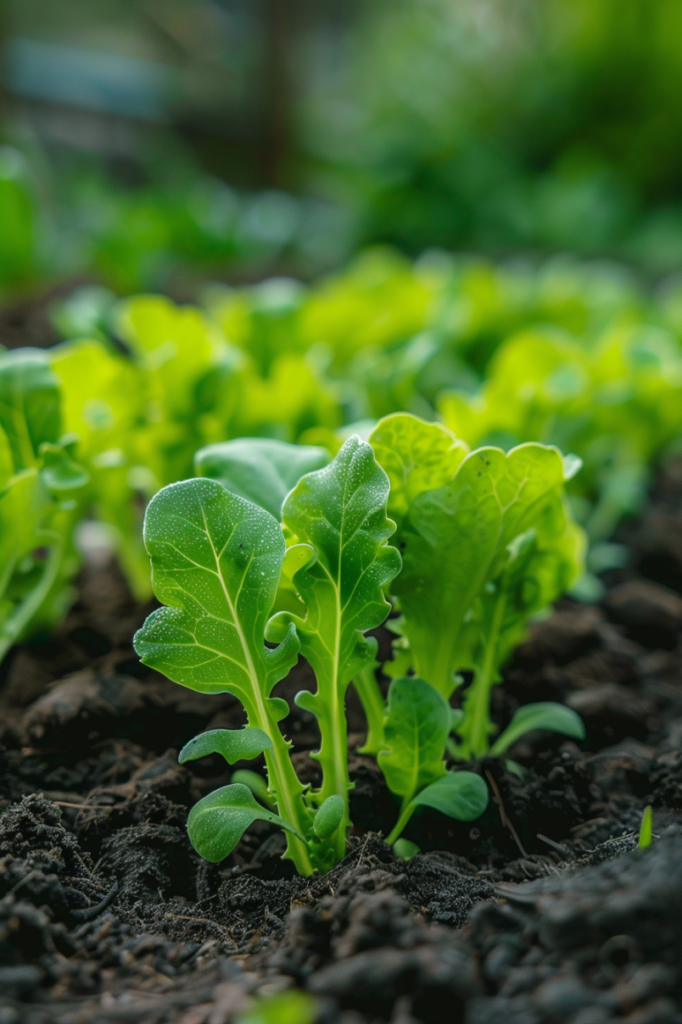
Transplanting Seedlings
Transplanting seedlings, whether they were started indoors or outdoors, is a crucial step for their continued growth and success.
Here’s a breakdown of the process for both methods:
Transplanting indoor seedlings
Wait until your seedlings have developed at least 4-6 true leaves and the danger of frost has passed.
Step 1: Watering seedlings
Water the seedlings thoroughly a day before transplanting. This makes them easier to handle and reduces root stress.
Step 2: Choose new pots
Choose containers slightly larger than the current ones, with drainage holes. Use a well-draining potting mix.
Step 3: Gently loosen the soil
Use a spoon or your fingers to carefully loosen the soil around the seedling’s root ball.
Step 4: Support the stem
Hold the seedling by the stem, not the leaves, to avoid damaging delicate foliage.
Step 5: Dig a hole in the new pot
Make a hole slightly larger than the root ball in the new pot.
Step 6: Position the seedling
Place the seedling in the hole, ensuring the base of the stem (where it meets the roots) sits at the same level as it did in the original pot.
Step 7: Fill and firm the soil
Gently fill the remaining space around the root ball with fresh potting mix. Firm the soil gently to secure the seedling.
Step 8: Water thoroughly
Water the newly transplanted seedling generously until water runs out the drainage holes.

Transplanting outdoor seedlings (direct sowing)
Wait until seedlings have at least 4-6 true leaves and have passed the thinning stage (if applicable).
Step 1: Watering
Water the planting area thoroughly a day before transplanting.
Step 2: Dig a hole
Make a hole slightly larger and deeper than the root ball of the seedling.
Step 3: Carefully remove seedling
Use a trowel or your hands to gently loosen the soil around the seedling. Lift it carefully, avoiding root damage.
Step 4: Position and fill
Place the seedling in the hole and ensure the base of the stem sits at the same level as it was in the ground. Fill the remaining space with soil and firm it gently.
Step 5: Water thoroughly
Water the newly transplanted seedling generously until the surrounding soil is settled.
- Read also: Tips for a Thriving Harvest: Watering Lettuce in the Garden
- Read also: Watering Lettuce in Pots: A Simple Guide for Beginners
Conclusion
Growing lettuce from seed is a straightforward process that can be incredibly rewarding.
By following these steps, you’ll be well on your way to enjoying fresh, home-grown lettuce in your salads, sandwiches, and more.
Remember to choose the right variety, prepare your soil, and provide the proper care, and you’ll have a bountiful harvest in no time.
FAQs
Lettuce typically takes about 45-55 days from seed to harvest, depending on the variety.
Lettuce can thrive with either method. If you have a short growing season or want an earlier harvest, start indoors. If you live in a mild climate or prefer a simpler approach, direct sow outdoors.
Yes, you can save seeds from heirloom or open-pollinated varieties. Allow the plant to flower and set seed, then collect and store the seeds in a cool, dry place.

